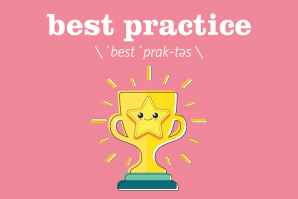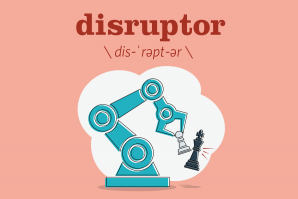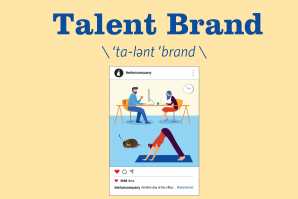If you’ve ever started a new job and were told you were going to be “onboarded,” you may have had nightmarish visions of being connected up to the Borg or having your retinas scanned. (No? Just me? Maybe I watch too much science fiction.)
The term has been around since the early 1990s, but its usage seems to have taken off in the last two decades as a way to capture not just the process by which a new employee gets comfortable at a new job (the location of the bathroom and all that), but also the process by which that employee begins to feel like they’re an integral part of their new company (the Borg and all that).
The Buzz
The term appears to have replaced “orientation” as a way to capture the depth and breadth of an employee’s connection to an organization — to be truly “on board” and move forward with the company in sync.
And while onboarding is most commonly used to refer to the employee-employer relationship, it’s also starting to be used as a term for how companies get customers to fully adopt their products and services, to build brand loyalty and, ultimately, create more business from those customers.
The Word
The term may sound wonkish (or Borg-ish), but it’s really meant to capture the essence of the old adage, “You never get a second chance to make a first impression.”
“Onboarding sets the tone for the ongoing relationship (an employee) will have with your organization and the people in it,” explains Regina W. Romeo, chief human resources officer of CPS HR Consulting in Sacramento.
To that end, having a solid process by which an employee is integrated into the company is the key to making sure that an employee is not only comfortable from day one, but is likely to stay with the company past day 30. Making sure a new hire knows to whom they report, where to go with questions and what’s expected of them has a direct effect on how successful that person will be in their new job. Research conducted by the Aberdeen Group in 2009 reported that an effective onboarding program improved retention rates by 50 percent, meaning that once a company finds the right candidate, proper onboarding increases the likelihood they’ll stay on board and not jump ship.
“Onboarding is above and beyond just signing forms and distributing a handbook or setting up an email account,” Romeo says. “It’s getting that employee to feel connected with the organization and understanding your culture, goals and career path.”
If they ask for a retina scan, though, I’d start looking for other employment.
–
Discuss this story and others on our Facebook page; “like” Comstock’s on Facebook by clicking or tapping here.
Recommended For You

Buzzwords: Best Practice
A method that establishes a standard way of doing things as a means of driving higher performance, success, ideal behavior or ethics.
Professionals use the term as a guiding principle or methodology for consistency and to drive the greatest results.

Buzzwords: Big Data
Huge amounts of data about consumer preferences that is collected and analyzed to help companies predict future behavior
The term “big data” is practically synonymous these days with the Big Bad Wolf. (Cambridge Analytica ring a bell?) But is big data really that big of a deal?

Buzzwords: Disruptor
A company, technology, good or service that is so innovative and widely adopted it disrupts an existing market
In ordinary English, “disruptor” might conjure up images of a kid acting out in class, or someone holding up traffic. Among the startup set, though, disruptor has become one of the highest compliments one can receive — or give to oneself.

Buzzwords: Talent Brand
An employer’s public-facing identity that reflects what it’s like to work at the company
Although companies may try to appear glossy and appealing on that platform, it can still be informative to gauge the company’s values, perks and just how genuine the smiles on employees’ faces may be.



